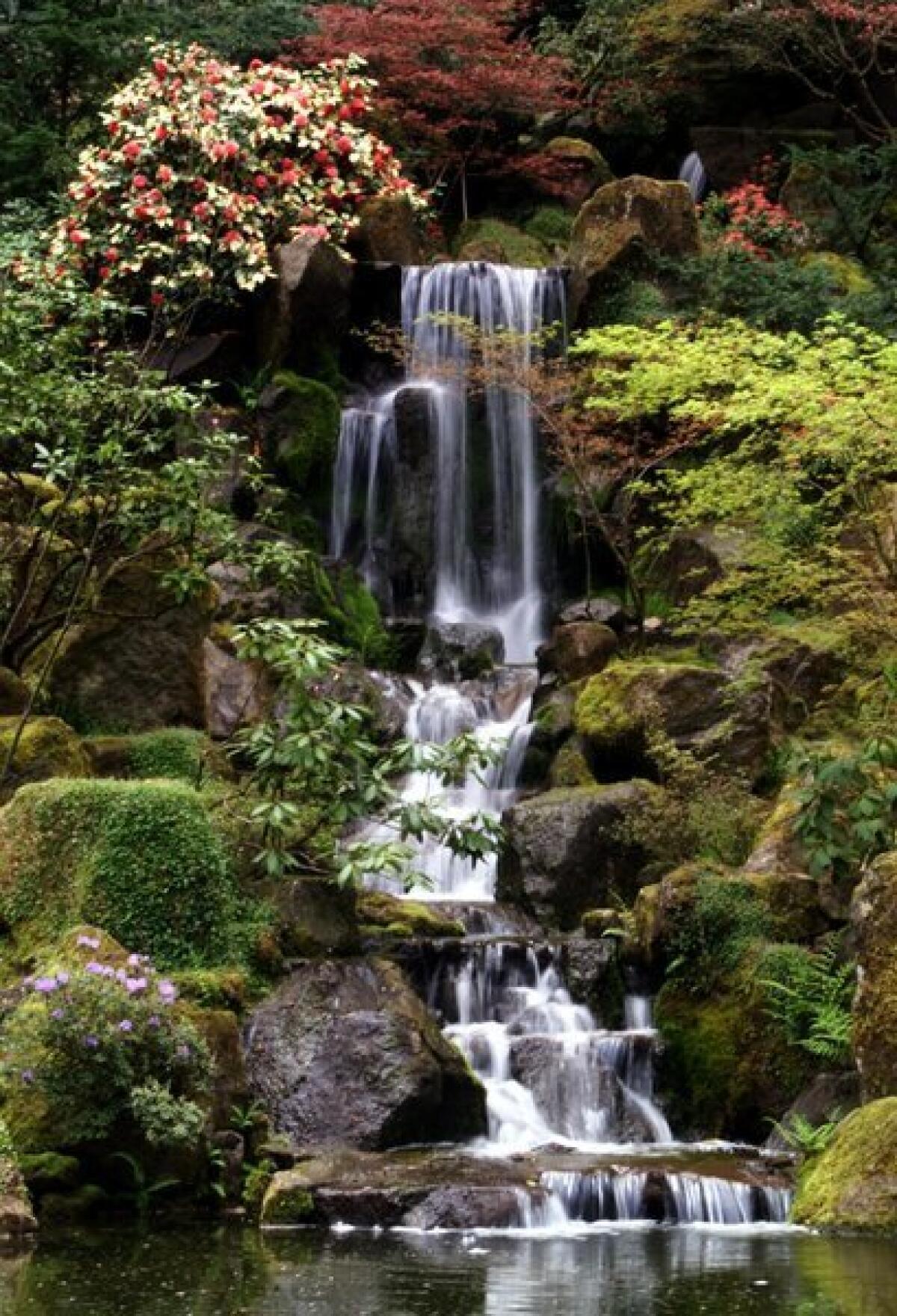Kendall Brown walks the winding path of Japanese gardens

- Share via
Kendall Brown, professor of Asian art history at Cal State Long Beach and one of the experts to weigh in on the Storrier Stearns garden in Pasadena (see related article), has a book coming out this month. It’s titled “Quiet Beauty: The Japanese Gardens of North America,” and for this edited Q&A, we asked about his fascination with Japanese gardens, how best to experience them and why our notion of Japanese gardens is not entirely Japanese.
What do you find most intriguing about Japanese gardens?
First, I was struck by how many of these gardens existed and the diverse historical periods from which they came. I realized that Japanese-style gardens must be meaningful for Americans, and I was intrigued. I call them “Japanese-style” gardens because my central belief is that they tell us more about how Americans have wanted to see Japan or how Japanese have wanted their culture perceived in America.
Then how have Americans wanted to see Japan? How do you think the Japanese have wanted their culture perceived here?
Japanese gardens in America are, fundamentally, American gardens in a Japanese idiom. In my current book, I trace how the styles and meanings of Japanese gardens in America have evolved over a century from symbols of exotica and collecting of foreign things before World War II to emblems of a new understanding of the “authentic” Japan after the war.
In the prewar period, at commercial tea gardens and on private estates like the Huntington, Japan was imagined through gardens as a dainty land of artistic people. Gardens were in idealized rural hamlets where a house, pond and stream was given spiritual dimension through Buddhist images and Shinto shrines.
In the postwar era, the emphasis was often on bringing a “name” garden designer from Japan with the intention of reproducing design effects from Japanese gardens — winding stepping stone paths, hiding and revealing scenic elements, creating elegant teahouses redolent of shibui (refined elegance) instead of the red arched bridge of the earlier era. The large public gardens in Vancouver [Canada], Seattle and Portland [Oregon] would all exemplify this.
Plantings vary dramatically in the 26 gardens you feature — what grows in Southern California doesn’t thrive in Boston — but they are all Japanese-style gardens. How important is plant selection?
There was a time in America when it was thought that a Japanese-style garden had to have indigenous Japanese plants. But in the last hundred years or so, the Japanese-style garden has evolved so it’s not about kinds of plants but how we use them. We use North American substitutions for Japanese plants to the same effect — for textures or color tones or to help create complex, dimensional space.
Reading your book, it’s clear that the more one knows about Japanese-style gardens — history, design principles, symbolism — the more enriching a visit will be. But if we don’t have that knowledge, how can we best enjoy them?
Even most people living in 21st century Japan are not well versed in traditional garden design. Many in our field are concentrating on the sensibility of space and the visitor’s interaction with the environment rather than the cultural, historical aspects. A Japanese-style garden can have resonance and create positive experiences, and now we’re thinking of them in terms of wellness, physical and mental. There’s an emphasis on the calm that comes from a Japanese garden’s refined vision of nature. They invite us to slow down, open up our perception and change our thinking.
You dedicate an entire chapter of your book to Koichi Kawana, the late Japanese-born, Los Angeles-based designer who created gardens across the country, including Suiho’en (Garden of Water and Fragrance) at the Donald C. Tillman Water Reclamation Plant in Van Nuys. Is there contemporary designer of Japanese-style gardens we should watch for?
There are many innovative builders of Japanese-style gardens in North America, but if you insist I name just one, it would be Hoichi Kurisu, who is based in Portland and South Florida. Japanese-style gardens in North America are evolving to fit the needs of Americans, emphasizing wellness and mindfulness through Japanese-based garden design, and Kurisu’s work in this area is influential.
For easy way to follow the L.A. scene, bookmark L.A. at Home and join us on Facebook, Twitter and Pinterest.






